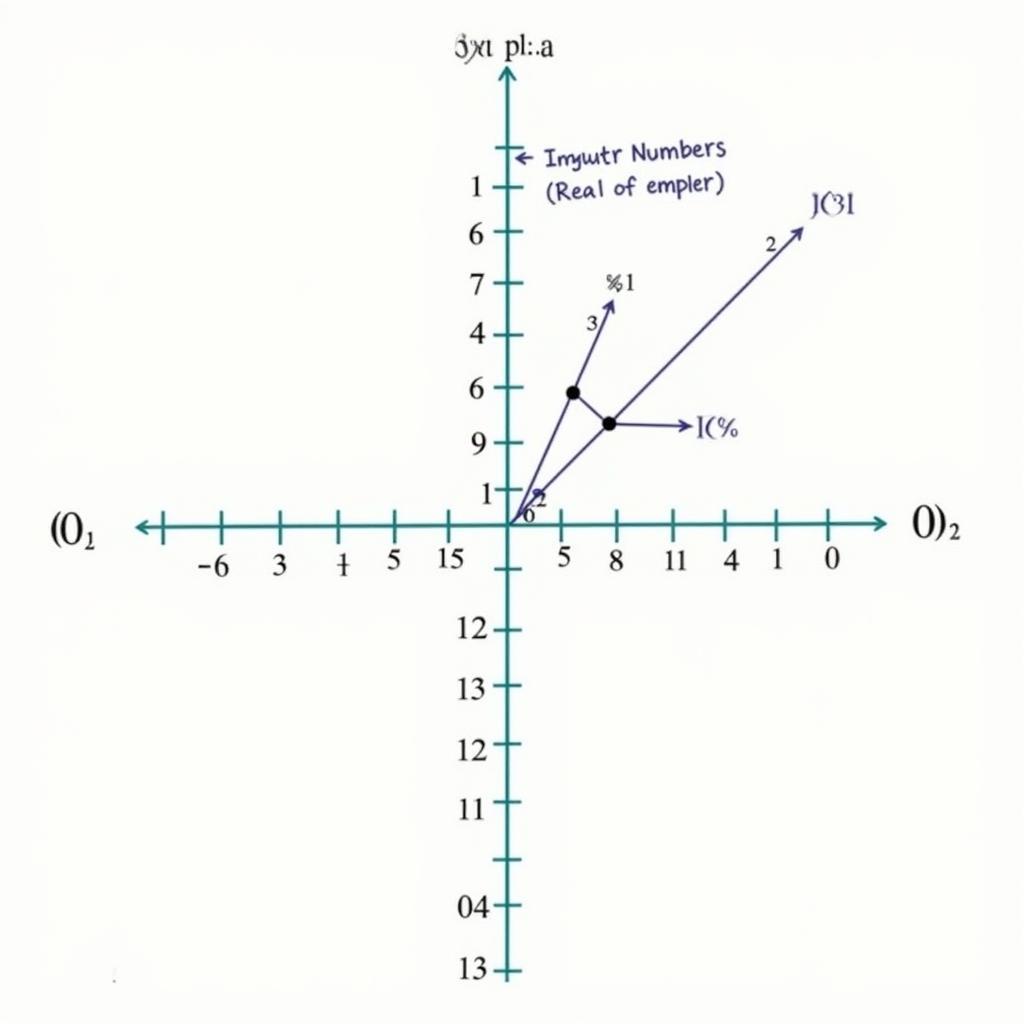Understanding the difference between imaginary and complex numbers is crucial in mathematics. This article delves into the definitions, characteristics, and applications of both, clarifying their relationship and highlighting their distinct roles.
Decoding Imaginary Numbers
Imaginary numbers are formed from the square root of negative one, denoted by the symbol i. Mathematically, i is defined as i² = -1. Any multiple of i is also considered an imaginary number, for instance, 2i, –i, and πi. These numbers exist on a separate number line perpendicular to the real number line, forming the imaginary axis of the complex plane. Before their formal acceptance, they were often dismissed as “impossible” or “fictitious” quantities.
 So sánh số ảo và số phức
So sánh số ảo và số phức
They primarily arise in contexts where the square root of a negative number is encountered, such as in certain quadratic equations or electrical engineering calculations.
Exploring Complex Numbers
Complex numbers encompass both real and imaginary components. They are typically expressed in the form a + bi, where a represents the real part and b represents the imaginary part, both a and b being real numbers. For example, 3 + 2i, -1 – i, and 2 (where b = 0) are all complex numbers. The real numbers themselves can be considered a subset of complex numbers, where the imaginary part is zero.
Complex numbers provide a more comprehensive framework for solving mathematical problems that cannot be addressed within the realm of real numbers alone. They have wide-ranging applications in physics, engineering, and various branches of mathematics.
Imaginary Numbers vs. Complex Numbers: Key Differences
While related, imaginary and complex numbers are distinct entities. The key difference lies in their composition:
- Imaginary Numbers: Consist solely of an imaginary component (a multiple of i).
- Complex Numbers: Combine a real and an imaginary component.
Essentially, imaginary numbers form a subset of complex numbers where the real part is zero. Thinking of it like fruits, all apples are fruits, but not all fruits are apples. Similarly, all imaginary numbers are complex numbers, but not all complex numbers are imaginary.
How are Imaginary Numbers and Complex Numbers used in the Real World?
Both imaginary and complex numbers have practical applications in diverse fields. Here are a few examples:
- Electrical Engineering: Complex numbers are essential for analyzing alternating current (AC) circuits.
- Quantum Mechanics: Imaginary numbers play a fundamental role in the Schrödinger equation, which describes the behavior of quantum particles.
- Fluid Dynamics: Complex numbers are used to model fluid flow and other complex physical phenomena.
- Signal Processing: Imaginary numbers are used in Fourier transforms, a powerful tool for analyzing and manipulating signals.
“Understanding the distinction between imaginary and complex numbers is not just a theoretical exercise; it’s the key to unlocking a deeper understanding of many scientific and engineering principles,” says Dr. Nguyễn Văn A, a renowned mathematician from Đại học Quốc gia Hà Nội.
Conclusion: Mastering the Fundamentals
Understanding the difference between imaginary and complex numbers is foundational for anyone venturing into advanced mathematics or related fields. This article provides a clear distinction, illuminating their unique characteristics and practical significance. By mastering these fundamental concepts, you open doors to comprehending complex phenomena and utilizing powerful mathematical tools in various applications.
FAQs:
- Is zero a complex number? Yes, zero is a complex number with both its real and imaginary parts equal to zero (0 + 0i).
- Can imaginary numbers be added to real numbers? No, they can’t be directly added. However, they can coexist within a complex number, expressed as the sum of a real and an imaginary part.
- What is the conjugate of a complex number? The conjugate of a complex number a + bi is a – bi.
- What is the modulus of a complex number? The modulus of a complex number a + bi represents its distance from the origin on the complex plane and is calculated as √(a² + b²).
- What is the argument of a complex number? The argument of a complex number is the angle it forms with the positive real axis on the complex plane.
- Are there numbers beyond complex numbers? Yes, there are other number systems like quaternions and octonions, which extend the concept of complex numbers.
- How do I perform arithmetic operations with complex numbers? Arithmetic operations with complex numbers follow specific rules, treating the real and imaginary parts separately while remembering i² = -1.
More Questions? Explore Further:
- Delve deeper into complex number operations.
- Learn about the geometric interpretation of complex numbers.
- Explore applications of complex numbers in specific fields.
Khi cần hỗ trợ hãy liên hệ Số Điện Thoại: 02838172459, Email: truyenthongbongda@gmail.com Hoặc đến địa chỉ: 596 Đ. Hậu Giang, P.12, Quận 6, Hồ Chí Minh 70000, Việt Nam. Chúng tôi có đội ngũ chăm sóc khách hàng 24/7.